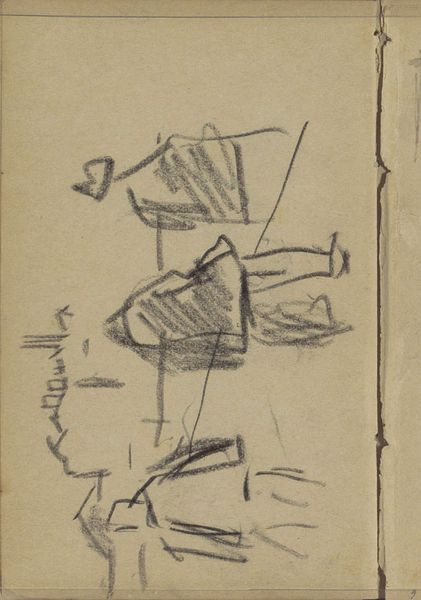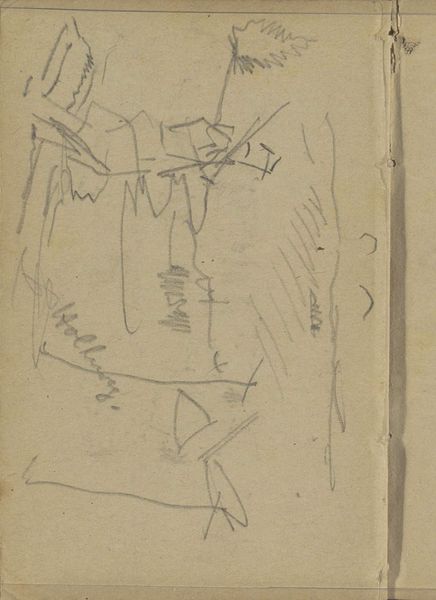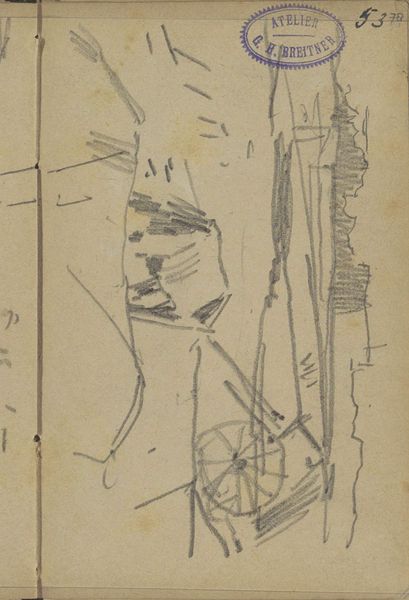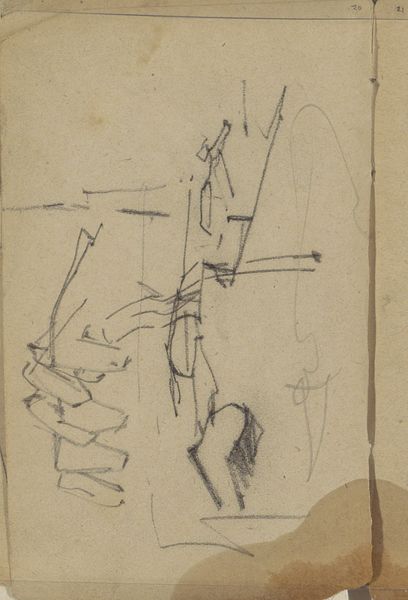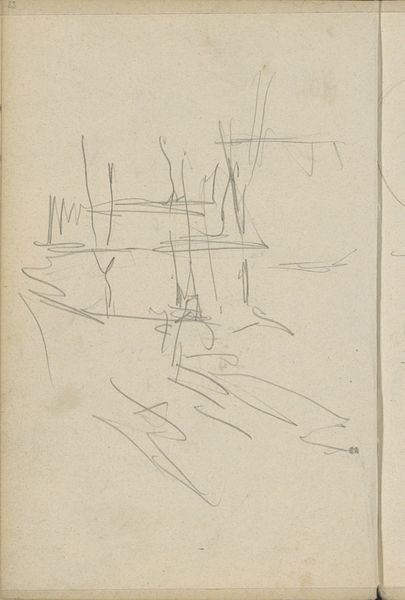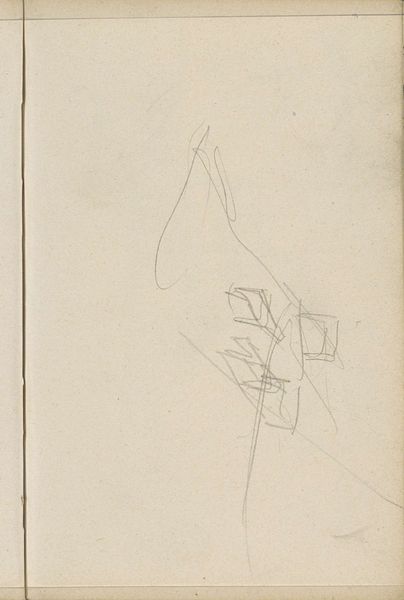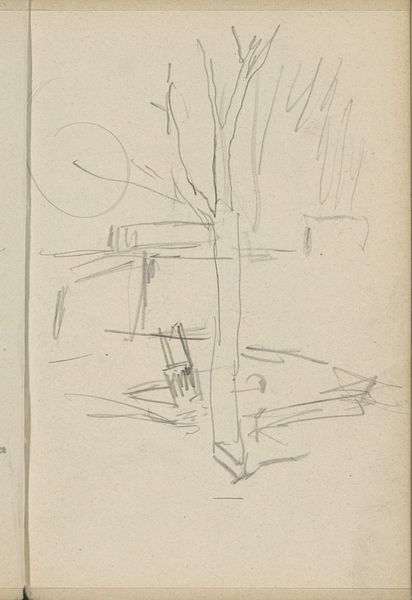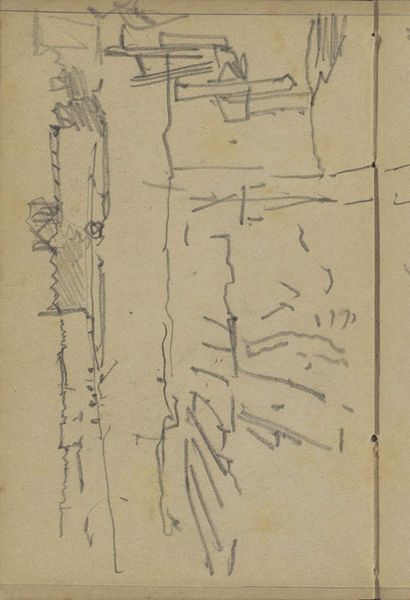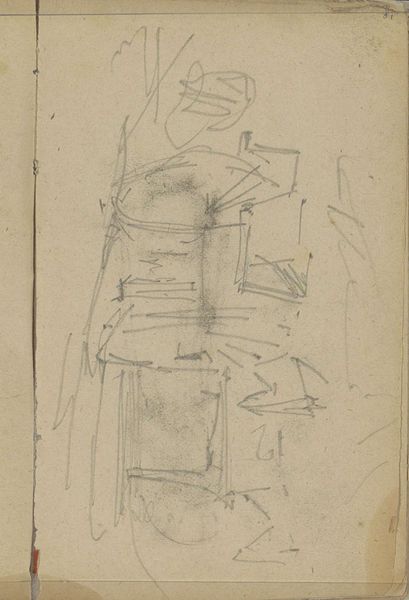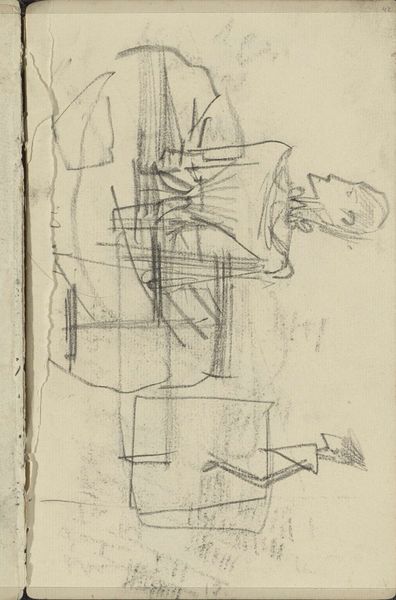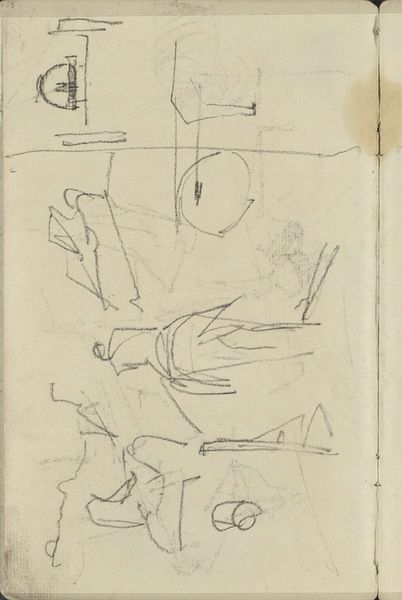
drawing, pencil
#
portrait
#
drawing
#
light pencil work
#
quirky sketch
#
impressionism
#
sketch book
#
figuration
#
personal sketchbook
#
idea generation sketch
#
sketchwork
#
sketch
#
pencil
#
sketchbook drawing
#
storyboard and sketchbook work
#
sketchbook art
#
initial sketch
Copyright: Rijks Museum: Open Domain
Editor: So, this drawing by George Hendrik Breitner, "Figuur, mogelijk een meisje, aan een tafel," made sometime between 1881 and 1883... It's a pencil sketch, seemingly quite rough and preliminary. I find it really interesting because it provides such an intimate look into the artist’s process. What do you see when you look at this sketch? Curator: It’s compelling to consider this sketch within the context of Breitner’s broader oeuvre and the late 19th-century art world. This isn’t a finished product destined for bourgeois consumption. Instead, it's a glimpse into the labor involved in image-making. We’re seeing the artist wrestling with form, line, and composition – the fundamental materials and processes that underpin even the most polished Impressionist painting. Consider the cost and accessibility of pencils and paper compared to paints and canvas at the time. Who had access to even produce work such as this, and why? Editor: That's a really good point. So, rather than looking at it as a study *for* a final piece, you're saying the *process itself* and the materials become the subject. It hints at class and artistic labor in a way a finished oil painting wouldn't. Do you think Breitner consciously intended for these sketches to reveal this aspect of artistic creation? Curator: Whether it was a conscious intention or not, the very act of preserving and displaying these sketches later elevates the labor, the materiality, and the everyday aspects of artistic creation. It challenges the idea of the artist as solely a producer of luxury goods and prompts us to consider the broader social and economic factors shaping artistic production. The support, even the physical existence of a sketchbook like this implies patronage and wealth behind even the initial idea generation. Editor: That really changes how I see this. It's no longer just a quick study but evidence of the conditions of artmaking itself. Curator: Precisely. By focusing on the materials and processes, we move beyond simply appreciating the finished image and instead examine the complex social and economic networks that make art possible.
Comments
No comments
Be the first to comment and join the conversation on the ultimate creative platform.
